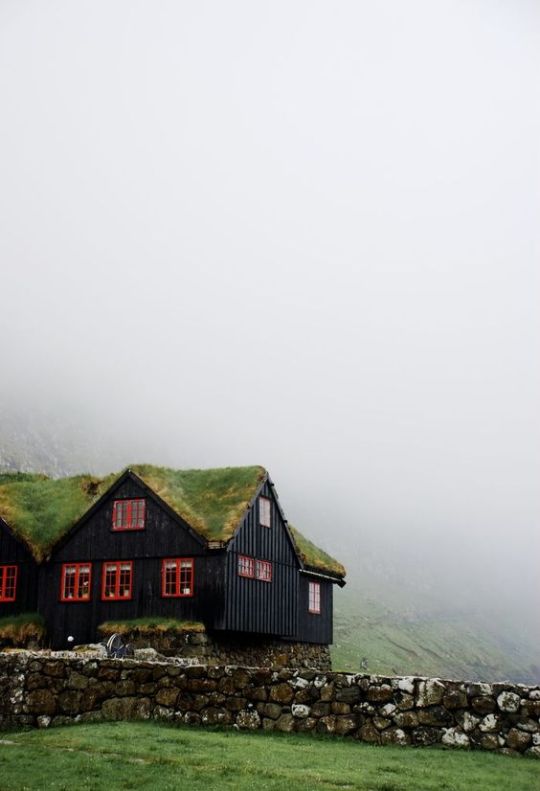#kirkjubøur
Text
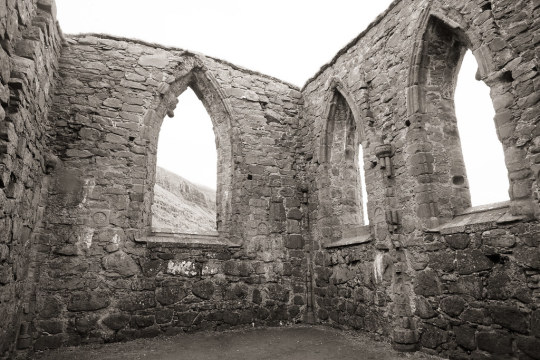
2 notes
·
View notes
Photo

View from the office today… #kirkjubøur #färöer #faroeislands #dreamjob #love#life #adventure #newfriend #sheep #babysheep #seaside #explorecolour #planetearth #homeplanet #sheepofinstagram #nofilter > > > 🐑 🌍 🐈⬛ < < (hier: Kirkjubøargarður) https://www.instagram.com/p/ChdL83OqV9W/?igshid=NGJjMDIxMWI=
#kirkjubøur#färöer#faroeislands#dreamjob#love#life#adventure#newfriend#sheep#babysheep#seaside#explorecolour#planetearth#homeplanet#sheepofinstagram#nofilter
1 note
·
View note
Photo

Voici mon 62ème vlog (blog en vidéo) Je suis partis pour un voyage de 8 jours aux îles Féroé Je te fais visiter cet archipel de 18 îles Je te propose de découvrir et d’explorer avec moi "Torshavn" qui est la plus petite capitale du monde ainsi que le petit village de "Kirkjubøur" qui se trouve sur la même île, "Streymoy" (le lien de ma chaîne YouTube se trouve dans la description de ce compte Instagram) https://youtu.be/mBhZwtWvJck #voyage #voyages #exporation #explorer #découverte #visite #tourisme #travel #ilesferoe #færøerne #faroeislands #streymoy #torshavn #steinatún #kongaminnið #kongaminnid #vesturkirkjan #tinganes #kirkjubøur #kirkjubour #kirkjubøargarður #kirkjuboargardur (à Torshavn, Faroe Islands) https://www.instagram.com/p/CgWNPL7gvyJ/?igshid=NGJjMDIxMWI=
#voyage#voyages#exporation#explorer#découverte#visite#tourisme#travel#ilesferoe#færøerne#faroeislands#streymoy#torshavn#steinatún#kongaminnið#kongaminnid#vesturkirkjan#tinganes#kirkjubøur#kirkjubour#kirkjubøargarður#kirkjuboargardur
0 notes
Text
Mein erster Tag auf den Färöe Inseln. Ich bin, nachdem ich mir noch Torshavn angeschaut habe, welche oftmals nicht ganz korrekt aber als die kleinste Hauptstadt der Welt bezeichnet wird, zunächst in den Süden der Insel Streymoy gefahren in den Ort Kirkjubøur, welcher als einer der Orte mit wichtigen Baudenkmälern zählt. Danach ging es in den Norden der Insel, durch kilometerlange Tunnel und bestimmt die Hälfte der Strecke auf einspurigen Straßen mit Haltebuchten, damit der Gegenverkehr vorbei kommt, in den Ort Saksun. Malerisch, anmutig und wie aus einer anderen Welt könnte man dort durch ein tiefes Tal entlang einer Lagune mit schwarzem Sand ans Meer wandern. Wunderschön!
Zum Schlafen ging es dann auf die Nachbarinsel Vagar durch einen viele Kilometer langen Tunnel unter dem Meer durch! Hammer, auch wenn man nicht drüber nachdenken sollte was alles über einem ist, während man auch wirklich tief nach unten fährt. Heute stehe ich auf jeden Fall auf einem Parkplatz bei einem einfachen Hostel mit mega entspannten Betreibern mit direkter Sicht auf die vorgelagerten Inseln.
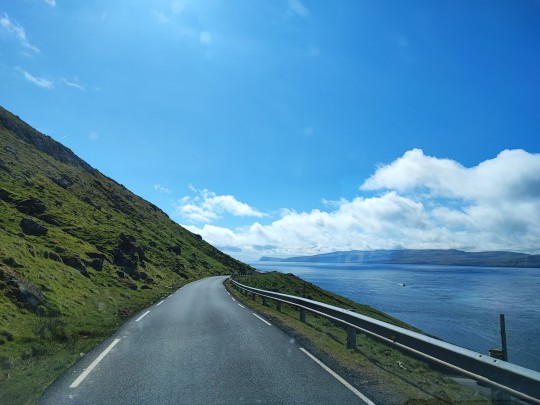









2 notes
·
View notes
Text
Wir teilen die interessantesten Fakten über die Färöer, die wir auf unserer kurzen, aber anstrengenden Reise zu diesen wilden Atlantikinseln gesammelt haben
Die Färöer-Inseln liegen im Herzen des Golfstroms, auf 62° Nord im Nordatlantik treibend, nordwestlich von Schottland – etwa auf halbem Weg zwischen Norwegen und Island.
Der abgelegene Archipel besteht aus 18 felsigen Inseln, die durch eine Reihe von Tunneln, Brücken und Fähren miteinander verbunden sind. Nur einen Katzensprung von Großbritannien über Edinburgh entfernt, sind die Inseln ein Paradies für Wanderer und Outdoor-Enthusiasten.
Wir verbrachten vier Tage auf den Färöern und dank der merkwürdig langen Tage (Sonnenuntergang war gegen 23:30 Uhr) konnten wir viel einpacken, von der Beobachtung von Papageientauchern in Mykines bis zum Wandern am Sørvágsvatn-See, wo sich der größte See der Färöer bis zum Meer erstreckt .
Wir teilen die interessantesten Fakten über die Färöer-Inseln, die wir auf unserer Reise aufgeschnappt haben.
Wissenswertes über die Färöer-Inseln
Viele Häuser auf den Färöern haben Rasendächer, eine Tradition, die mehr als tausend Jahre zurückreicht. Sie sehen nicht nur charmant aus, sondern bieten Wärmedämmung und Schutz vor Regen. (Quelle: CNN)
Atlas & Boots Rasendachhäuser in Kirkjubøur
Irische Mönche, die im 6. Jahrhundert ankamen, besiedelten ursprünglich die Färöer-Inseln. Die ersten nordischen Siedler waren Bauern, die etwa 200 Jahre später ankamen. (Quelle: BBC)
Wikinger besiedelten dann im 9. Jahrhundert die Färöer-Inseln. (Quelle: The Independent)
Die Telefonnummer des Premierministers finden Sie im Telefonbuch. (Quelle: The Telegraph)
Der Torfdach-„Parlamentssteg“ von Tinganes (übersetzt „Das Ding“) gilt als einer der ältesten parlamentarischen Versammlungsorte der Welt und stammt aus dem Jahr 825 n. Chr. (Quelle: The Independent)
Atlas & Boots Das Torfdach „Parlamentssteg“ von Tinganes
Etwa 50 % der Elektrizität auf den Färöern stammt derzeit aus erneuerbaren Quellen. Die Nation will es bis 2030 zu 100 % schaffen. (Quelle: State of Green)
Auf den Färöern gibt es keine offiziellen Gefängnisse. In Mjørkadalur befindet sich ein Kurzzeitgefängnis mit Grasdach, das für gewaltfreie Straftäter genutzt wird, die kurze Haftstrafen verbüßen. Gefangene, die länger als anderthalb Jahre festgehalten werden, werden in dänische Gefängnisse geschickt. (Quelle: Tourismusverband der Färöer-Inseln)
Auf den gesamten Färöern gibt es nur drei Ampeln – alle in der Hauptstadt Tórshavn. Erfahren Sie mehr in unseren Tipps zum Autofahren auf den Färöer-Inseln. (Quelle: National Geographic)
Eine der interessantesten Tatsachen über die Färöer-Inseln ist, dass auf den Inseln keine Bäume natürlich wachsen. Es gibt eine Handvoll kleiner Plantagen, die überall verstreut sind, aber es gibt keine einheimischen Bäume. (Quelle: Belfast Telegraph)
Atlas & Boots Die schönen, aber baumlosen Färöer-Inseln
Im April 2019 schlossen die Färinger vorübergehend Teile des Landes, um beliebte Touristenattraktionen zu reparieren. Rund 100 „Voluntouristen“ arbeiteten im Rahmen einer Kampagne zur Förderung von Tourismus und Nachhaltigkeit mit Einheimischen zusammen. (Quelle: The Guardian)
Auf den Färöer-Inseln herrscht ein Mangel an Frauen, weshalb Männer zunehmend Frauen aus Ländern Südostasiens finden. Bei einer Bevölkerung von nur 50.000 leben heute mehr als 300 Frauen aus Thailand und den Philippinen auf den Inseln, die die größte ethnische Minderheit auf den Färöern bilden. (Quelle: BBC)
Auf den Färöer-Inseln sind Sie nie weiter als 5 km vom Meer entfernt. (Quelle: Google Maps)
Atlas & Boots Auf den Färöern ist das Meer nie weit entfernt
Zusammen mit Norwegen gehörten die Färöer-Inseln ab 1380 zum Königreich Dänemark. 1948 wurde das Home Rule Act verabschiedet und die Inseln wurden zu einer autonomen, selbstverwalteten Region des Königreichs Dänemark. (Quelle: BBC)
Die Färöer sind eine der wenigen Nationen, die weiterhin Wale fangen. Da es nicht um Profit
geht, verstößt es nicht gegen das weltweite Verbot des kommerziellen Walfangs, das seit den 1980er Jahren gilt. Die färöische Regierung beschreibt den Walfang als „natürlichen Bestandteil des färöischen Lebens“ und die Bewohner jagen weiterhin Grindwale, die nicht vom Aussterben bedroht sind. (Quelle: CNN)
Im Jahr 2006 wählte National Geographic Traveler die Färöer-Inseln aus einer ausgewählten Liste von 111 Inseln und Archipelen zum attraktivsten Inselreiseziel der Welt. (Quelle: Original nicht verfügbar)
Der größte See der Färöer, der See Sørvágsvatn, liegt in unmittelbarer Nähe zum Ozean. Es ist berühmt für seinen Blick auf „den See über dem Ozean“. Aus einem bestimmten Blickwinkel fotografiert, sieht es so aus, als würde der See auf den Klippen hoch über dem Ozean aufragen. In Wahrheit liegt es hinter der Klippe, nur 30-40 m höher als das Meer. (Quelle: National Geographic)
Shutterstock Der berühmte Blick auf „den See über dem Ozean“
Der Fischereisektor macht etwa 97 % aller Exporte und die Hälfte des nationalen BIP aus. Der zweitgrößte Wirtschaftszweig ist der Tourismus. (Quelle: CIA World Factbook)
Niels Ryberg Finsen, ein färöischer Arzt, erhielt 1903 den Nobelpreis für Physiologie oder Medizin „in Anerkennung seines Beitrags zur Behandlung von Krankheiten, insbesondere Lupus vulgaris, mit konzentrierter Lichtstrahlung“. (Quelle: The Nobel Prize)
Leitbild: Atlas & Boots
.
2 notes
·
View notes
Text
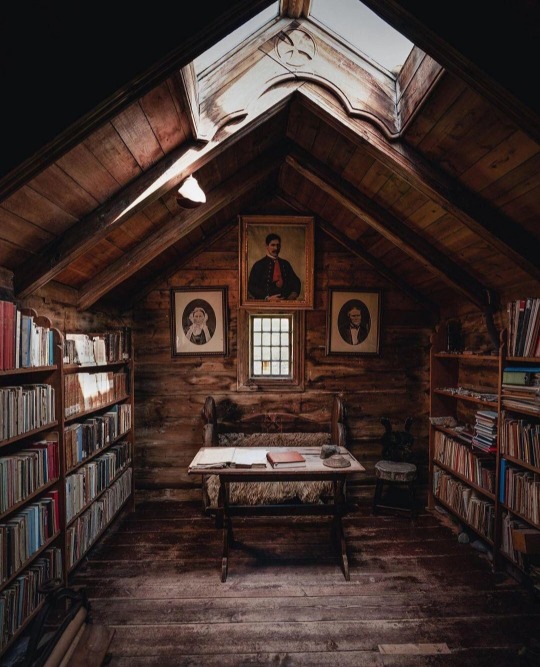
#kirkjubøur#faroe islands#north#nordic#nordicstyle#cabin#house#wood#attic#library#librarybooks#history#faroesehistory#light#daylight#photoraphy
41 notes
·
View notes
Text

Kirkjubøur, Faroe Islands - by Matt Berthou
354 notes
·
View notes
Text

Faroer, Kirkjubøur
12 notes
·
View notes
Photo

Kirkjubøur. Faroe Islands
3 notes
·
View notes
Photo
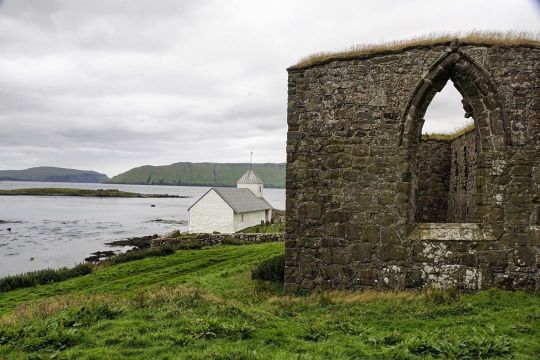
When I was a teenager my grandfather (on my mother’s side) knew nothing better than to take me to historical places in the Faroe Islands and tell me the old tales of the places we visited together. . One of the stories he was particularly fond of telling was that of the old ruined St. Magnus Cathedral in Kirkjubøur. . I would’ve loved to have today’s technology back then, so I could have recorded some of these trips and relived them again today. . Tak for alle historierne, morfar! Vi elsker dig! 💜 . . . . . #múrurin #stmagnuscathedral #kirkjubøur #storytelling #visitfaroeislands #faroeislands #smyrilline #atlanticairways #thefaroeislands #roamthefaroeislands #fog #nature #naturephotography #naturephotographer #femalephotographer #landscapephotography #ocean #weathergodsplayground #62degreesnorth #faroesebyheart #atlanticocean #islandgirl #geoview #scandinavianwanderers #scandinavia #birdsofinstagram #cliffs #rawnature #simonechristinedotcom (at Kirkjubøur) https://www.instagram.com/p/CA3L6B5Dbcu/?igshid=1hba8od3qshkq
#múrurin#stmagnuscathedral#kirkjubøur#storytelling#visitfaroeislands#faroeislands#smyrilline#atlanticairways#thefaroeislands#roamthefaroeislands#fog#nature#naturephotography#naturephotographer#femalephotographer#landscapephotography#ocean#weathergodsplayground#62degreesnorth#faroesebyheart#atlanticocean#islandgirl#geoview#scandinavianwanderers#scandinavia#birdsofinstagram#cliffs#rawnature#simonechristinedotcom
0 notes
Photo

Cycling in Streymoy 🇫🇴 #torshavn #kirkjubøur #tórsvøllur #streymoy #faroeislands #cycling #bikechannel (presso Tórshavn) https://www.instagram.com/p/B1rZMlEimCB/?igshid=1ty3bi818gwip
0 notes
Photo

14 Mai, 16h12 - Kirkjubøur, île de Streymoy, Îles Féroé, Danemark #kirkjubøur #kirkjubour #streymoy #faroeislands #faroeisland #ilesferoe #îlesféroé #danemark #dänemark #dänemark🇩🇰 #travel #travelphotography #travelphoto #voyage #voyages (at Kirkjubøur) https://www.instagram.com/p/CdlJPMVt2Fx/?igshid=NGJjMDIxMWI=
#kirkjubøur#kirkjubour#streymoy#faroeislands#faroeisland#ilesferoe#îlesféroé#danemark#dänemark#dänemark🇩🇰#travel#travelphotography#travelphoto#voyage#voyages
0 notes
Video
Magic in #kirkjubøur #video #faroeislands #skyline #clouds #travel #travellife #travelling #discover #discovery #instagood #picoftheday #photooftheday #instadaily (presso Kirkjubøur)
#instadaily#discover#video#clouds#discovery#travellife#photooftheday#instagood#kirkjubøur#travel#skyline#faroeislands#travelling#picoftheday
1 note
·
View note
Photo
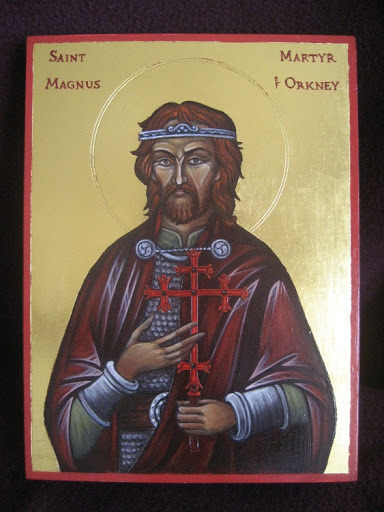
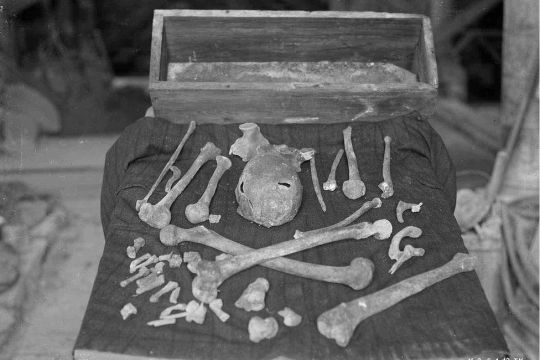


On April 16th 1117 Earl Magnus of Orkney, later St Magnus, is betayed and murdered by his cousin Håkon on the island of Egilsay in Orkney.
Quite a long post, but I feel I don’t know enough about the subject to do the post justice, so the following is from the wiki page.
Saint Magnus, Earl Magnus Erlendsson of Orkney, sometimes known as Magnus the Martyr, was Earl of Orkney from 1106 to about 1115. His story is told in two sagas, Magnus' saga (the shorter and longer one) and one legend, Legenda de sancto Magno.
Magnus's grandparents, Earl Thorfinn and his wife Ingibiorg Finnsdottir, had two sons, Erlend and Paul, who were twins. Through Ingibiorg's father Finn Arnesson and his wife, the family was related to the Norwegian Kings Olav II and Harald II.
Born in 1075, Magnus was the son of Erlend Thorfinnsson, Earl of Orkney, and he first served Magnus III of Norway as skutilsvein (approx. Chamberlain), who took possession of the islands in 1098, deposing Erlend and his brother, Paul. Paul's son, Haakon Paulsson, then became regent on behalf of the Norwegian prince, Sigurd, who made Haakon earl in 1105.
According to the Orkneyinga Saga, Magnus had a reputation for piety and gentleness, and was rejected by the Norwegians, refusing to fight in a Viking raid in Anglesey, Wales, because of his religious convictions, instead staying on board his ships during the Battle of Anglesey Sound, singing psalms. He was obliged to take refuge in Scotland, but returned to Orkney in 1105 and disputed the succession with his cousin Haakon.
Having failed to reach an agreement, he sought help from King Eystein I of Norway, who granted him the earldom of Orkney and he ruled jointly and amicably with Haakon until 1114.
Their followers fell out, and the two sides met at the Thing (assembly) on the Orkney mainland, ready to do battle. Peace was negotiated and the Earls arranged to meet each other on the island of Egilsay, each bringing only two ships. Magnus arrived with his two ships, but then Haakon treacherously turned up with eight ships.
Magnus took refuge in the island's church overnight, but the following day he was captured and offered to go into exile or prison, but an assembly of chieftains insisted that one earl must die. Haakon's standard bearer, Ofeigr, refused to execute Magnus, and an angry Haakon made his cook Lifolf kill Magnus by striking him on the head with an axe. It was said that Magnus first prayed for the souls of his executioners.
According to the sagas, the martyrdom took place after Easter, on April 16 . The year is often given as 1115, but this is impossible: 16 April fell before Easter that year.
Magnus was first buried on the spot where he died. According to his legend, the rocky area around his grave miraculously became a green field. Later Thora, Magnus' mother asked Haakon allow her to bury him in a Church. Haakon gave his permission and Magnus was then buried at Christchurch at Birsay.
There were numerous reports of miraculous happenings and healings. William the Old, Bishop of Orkney, warned that it was "heresy to go about with such tales" and was then struck blind at his church but subsequently had his sight restored after praying at the grave of Magnus, not long after visiting Norway (and perhaps meeting Earl Rognvald Kolsson).
Magnus's nephew, Rognvald Kali Kolsson, laid claim to the Earldom of Orkney, and was advised by his father Kol to promise the islanders to "build a stone minster at Kirkwall" in memory of his uncle the Holy Earl, and this became St Magnus Cathedral, Kirkwall. When the cathedral begun in 1137 was ready for consecration the relics of St Magnus were transferred, and in 1917 a hidden cavity was found in a column, containing a box with bones including a damaged skull. These are held without (much) doubt to be the relics of St Magnus.
In the Faroes, the St Magnus Cathedral, Kirkjubøur was built around 1300 A.D., at the time of Bishop Erlendur. It is quite sure that the church was used for services (though it never was finished, or has been destroyed later), for estimated relics of Saint Magnus were found here in 1905. Kirkjubøur is one of the most important Faroese historical sites and expected to become a World Heritage Site. In total there are 21 churches in Europe dedicated to St Magnus.
There are two Icelandic sagas of St Magnus's life, Magnus' saga the shorter and longer as well as the account in the Orkneyinga Saga. In addition to this there are several devotional works in Gaelic and Latin about St Magnus, including a legend, Legenda de sancto Magno. Saint Magnus is the subject of the novel Magnus by Orcadian author George Mackay Brown, which was published in 1973, and St Magnus, Earl of Orkney by John Mooney. In 1977 Peter Maxwell Davies wrote a one-act opera, The Martyrdom of St Magnus, based on Mackay Brown's novel.
The pics include relics believed to be Magnus, discovered in the Cathedral in Kirkwall in 1919, the other is a reconstruction of how he might have looked.
#Scotland#scandinavia#Orkney#vikings#Northern Isles#Norway#religious figure#religious history#history#matyr
40 notes
·
View notes
